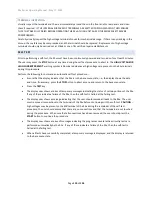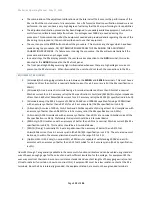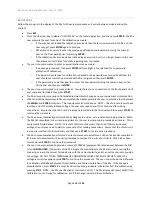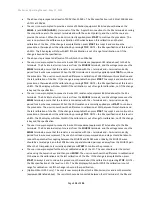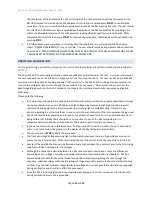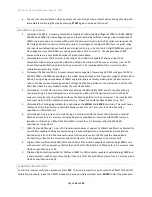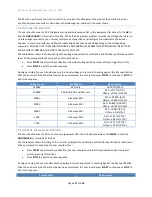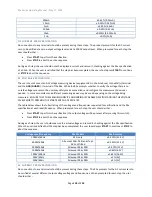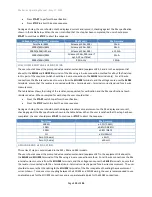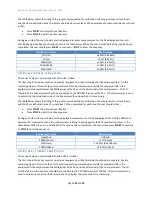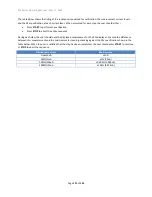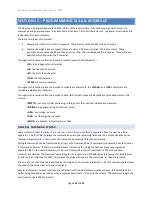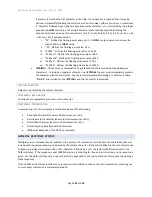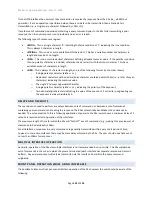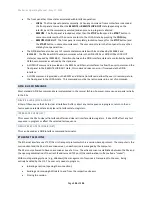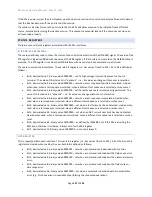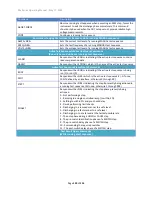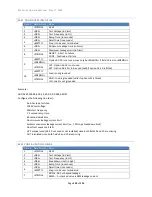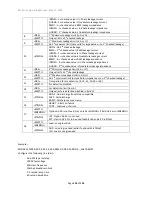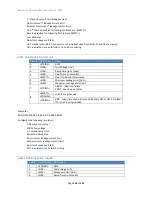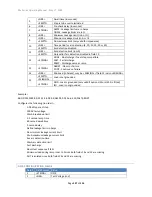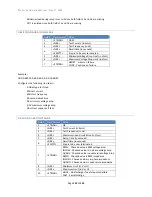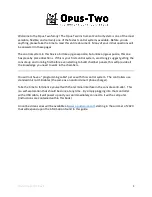
95x Series Operating Manual - May 17, 2022
Page
124
of
155
if present, it must be the first character in the field. If an exponent is required then it may be
defined immediately following the mantissa in one of two ways, either a) an upper- or lowercase
‘E’ character followed by an optional exponent polarity character (+ or
-) followed by the integer
exponent (in
<NR1>
format), or b) a single character (case sensitive) explicitly defining the
exponent which may be one of the characters T (+12), G (+9), M (+6), K (+3), k (+3), m (-3), u (-6),
n (-9) or p (-12). Examples include
–
i.
“12”. Defines the
floating-point value +12.0. A
<NR1>
syntax numeric can always be
used to define a
<NR3>
value.
ii.
“
-
12”. Defines the
floating-point value -12.0.
iii.
“1.2345”. Defines the
floating-point value +1.2345.
iv.
“12.45e+1”. Defines the
floating-point value +124.5.
v.
“12.45e+01”. Defines the
floating-point value +124.5.
vi.
“12.45e1”. Defines the
floating-point value +124.5.
vii.
“12.345K”. Defines the
floating-point value +12345.0.
e.
<STRING>
. This can be any combination of printable ASCII characters (including whitespace
characters). To include a separator character in a
<STRING>
the user must immediately precede
the character with the / character. Any character immediately following a / character is taken
“literally” and included in the
<STRING>
and the / character is discarded.
FIELD SEPARATOR
Fields are separated by the comma character.
COMMAND SEPARATOR
Commands are separated by the semi-colon character.
COMMAND TERMINATOR
A command (or set of commands) is terminated by any of the following-
•
A line-feed character (shown in this document as <LF>).
•
A carriage return character (shown in this document as <CR>).
•
A form feed character (shown in this document as <FF>).
•
(GPIB only) Any data byte with EOI asserted.
•
(GPIB only) Reception of the GET bus command.
GENERAL RESPONSE SYNTAX
Multiple query commands may be included in the same set of commands, in which case the overall response will
include each requested response, separated by the comma character, in the order defined in the set of commands.
A response is always terminated with a <CR> character followed by a <LF> character (with EOI asserted for the
GPIB interface). If the response is over 19999 characters in total length, then an error is raised, and no response is
given. For the GPIB interface only, a space character is appended to the start of each set of responses (including a
blank response).
On the RS232 and Ethernet interfaces any response is transmitted as soon as the set of commands containing one
or more query commands is completely decoded.

